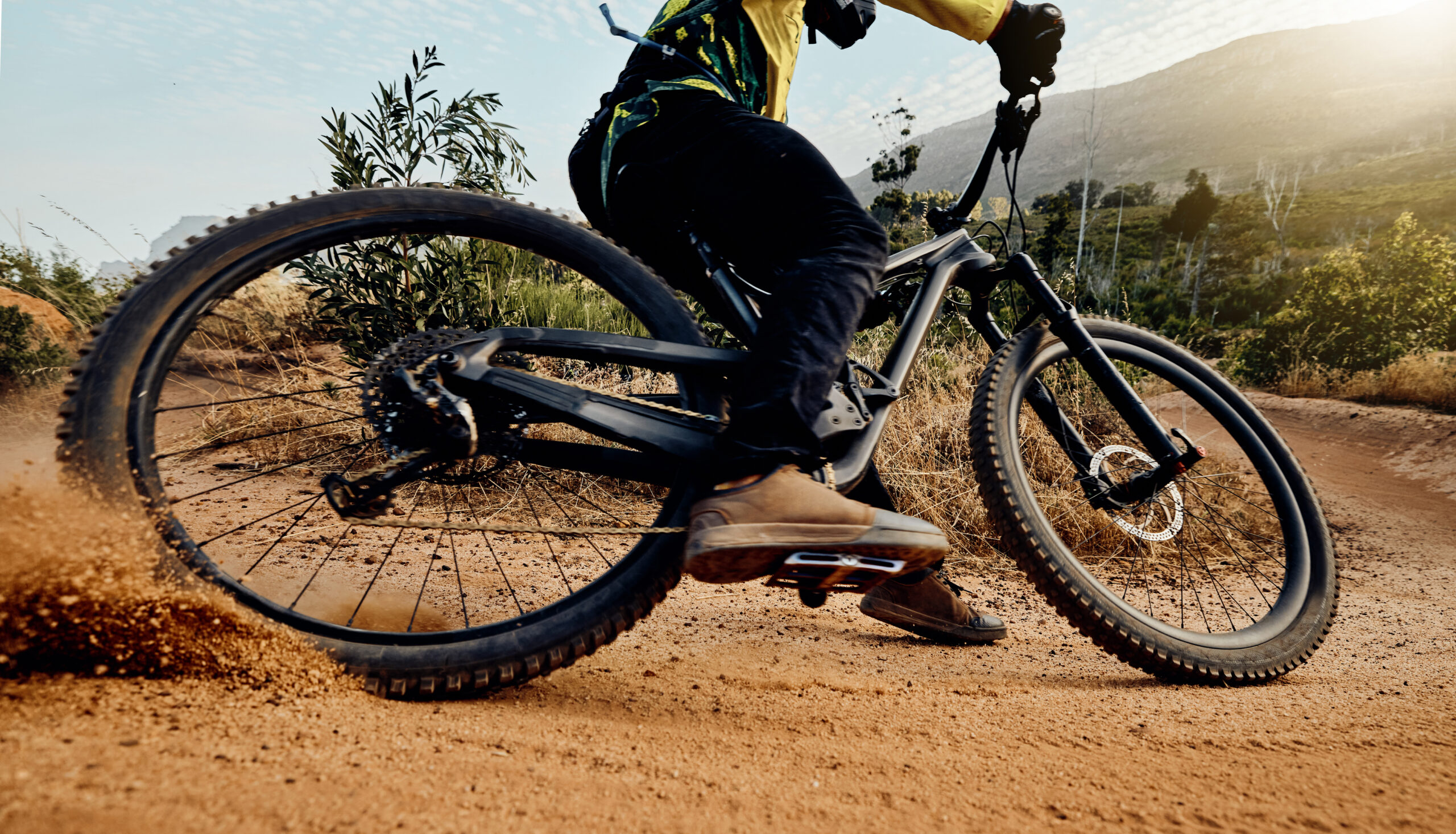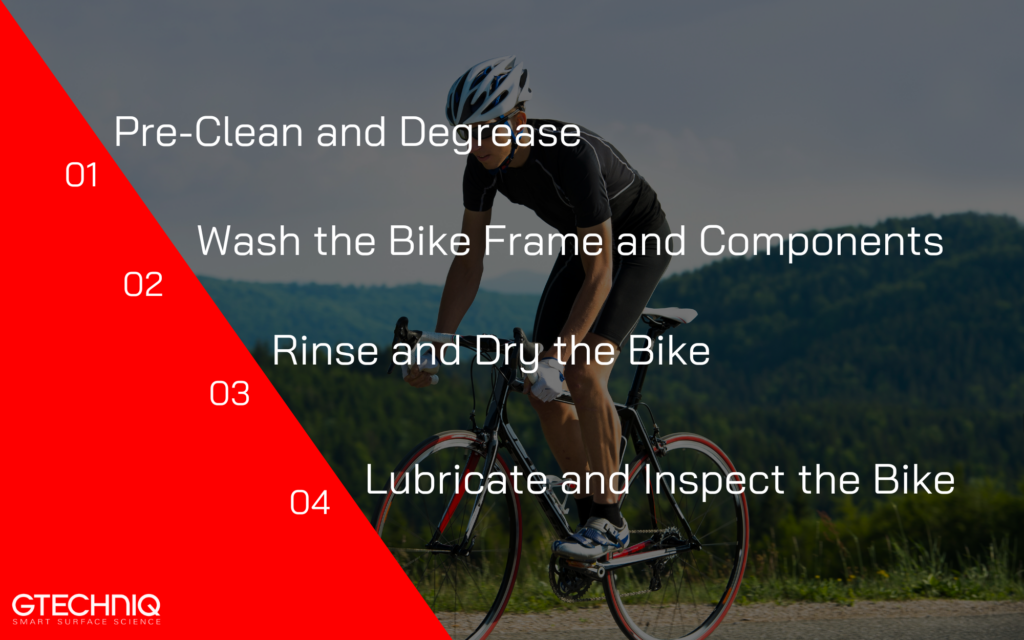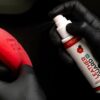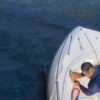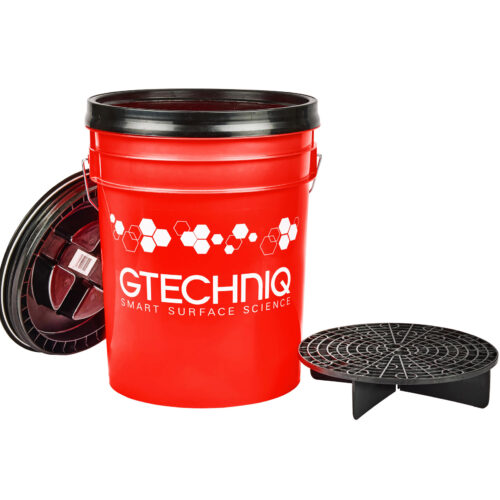Keeping your bike clean is essential for performance, safety, and longevity. Whether you have a mountain bike, road bike, or dirt bike, using high-quality products like those from Gtechniq can make cleaning easy and effective. Follow these steps to give your bike the care it deserves.
Preparation and Gathering Materials
Start by gathering everything you’ll need:
- Bike wash from Gtechniq
- Bike-specific degreaser and chain cleaner
- Chain lube
- Garden hose or bucket with clean water
- Clean sponge and/or microfiber cloths
- Drying towel
- Paper towels
- Spray bottle
- Optional: Air compressor
Step 1: Pre-Clean and Degrease
- Set up your cleaning area, ideally outdoors or in a well-ventilated space.
- Use a garden hose to rinse the entire bike, removing loose dirt and grime.
- Spray a bike-specific degreaser onto the chain, derailleur cage, and derailleur pulleys.
- This helps loosen built-up grime and prepares the bike for washing.
- Let the degreaser sit for a few minutes, then scrub these parts lightly with a clean cloth.
- Wipe off any excess lube or grime with a paper towel.
Step 2: Wash the Bike Frame and Components
- Mix soapy water with warm water in a bucket.
- Use a clean sponge to gently scrub the bike frame. Avoid using high pressure, especially on parts like brake pads, disc brakes, and the bottom bracket.
- Clean each area carefully:
- Brake Pads: Use a clean rag or microfiber cloth to gently wipe these to prevent residue buildup.
- Chain and DriveTrain: Apply Gtechniq’s Drivetrain Degreaser on these parts to remove any remaining dirt.
- Rinse thoroughly with clean water to ensure all soap and dirt are washed away.
Step 3: Rinse and Dry the Bike
- Rinse the entire bike using the hose. Keep the pressure low to protect sensitive parts.
- Dry the bike frame and components with a damp microfiber cloth. Pay special attention to the rear wheel, chain, and any small crevices.
- If you have an air compressor, use it to blow out water from tight areas like the bottom bracket and other tight spaces.
- Use a paper towel to dry any remaining wet spots, especially on the bike chain.
Step 4: Lubricate and Inspect the Bike
- Once your bike is dry, apply chain lube or dry lube to the bike chain to prevent rust and wear.
- Wipe off any excess lube using a clean rag to keep the chain from attracting dirt on your next ride.
- Give your bike a final look-over for any missed dirt or grime, especially around the drivetrain and rear wheel.
- Optional: Apply a protective finish like Gtechniq Bike Ceramic to keep your bike shining and ready for your next muddy or wet ride.
Final Tips for Bike Care
Regular washing helps keep your bike in top shape. Always check your bike chain, disc brakes, and brake calipers after cleaning. For serious repairs or adjustments, visit a local bike shop. If you’ve had a muddy ride, give your bike a rinse sooner to avoid long-term dirt buildup. At Gtechniq, we formulate our products to give you the ultimate protection for your bike. Use this guide as part of a routine to ensure your bike is always clean, protected, and performing its best.
Gear Up for the Perfect Clean.
Shop bike cleaning essentials now.
FAQs
Is hot water safe to use when washing my bike?
No, we don’t recommend using hot water to wash your bike, as high temperatures can weaken certain parts and potentially damage delicate components like the decals and plastics. Instead, use warm water to effectively loosen dirt and debris without risking harm to your bike’s frame and parts.
Can I use dish soap to wash my bike?
We do not recommend using dish soap to wash your bike. Dish soap is often too harsh and can strip protective coatings from your bike’s frame and components. Instead, opt for a bike-specific cleaner like Gtechniq’s bike wash, which is formulated to clean without causing damage.
Should I use a high-pressure hose to rinse my bike?
It’s best to avoid high-pressure hoses when washing your bike, as they can push water into sensitive areas like the bottom bracket, wheel bearings, and derailleur pulleys, causing long-term issues. A regular garden hose with moderate pressure is ideal for rinsing.
How often should I wash my bike?
It’s good practice to wash your bike after every muddy ride or after it’s been exposed to dust and grime. Regular cleaning keeps the chain, brakes, and other components working smoothly. If you’re using the bike mainly in dry, clean conditions, a wash every few weeks is generally sufficient.
